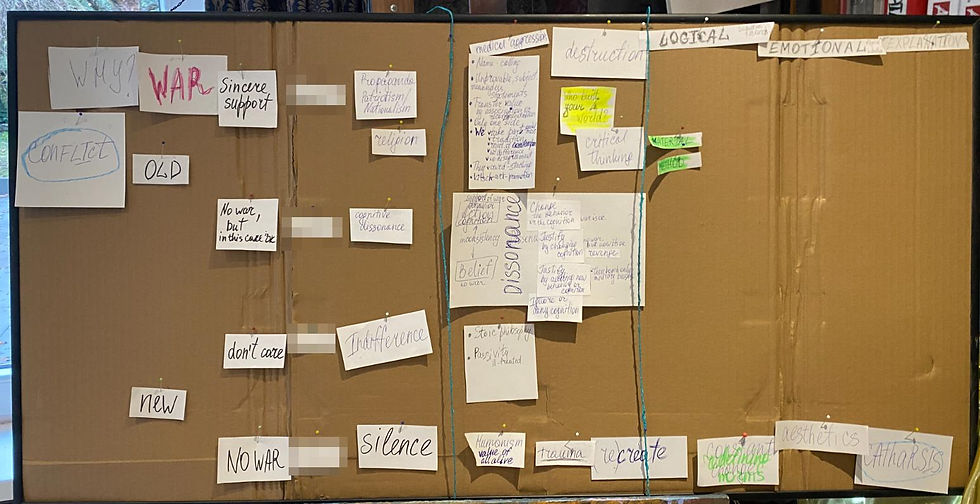My work plan is very agile and moving.

Here I keep track of the overall duration of my research so as not to miss the necessary dates.

InI have my notebook where I write down all my ideas and comments and make small sketches.


In addition, I started a work board, but it turned out to be very conservative, although it helped me with my thoughts.
There is also a separate list of literature, artists, etc., which I keep up to date, as authors are added or removed.

And one more Excel spreadsheet into which I add ideas, and correlate them with theories, and according to the plan, it should help me with the analysis of the results.

Regarding visiting exhibitions, live discussions and other live events.
I believe that this formulation has lost its relevance. I need to drive at least an hour and a half to the nearest large museum, and the exhibitions that are taking place now or planned for next year are not of direct interest to my research. At the same time, I attended more than twenty cultural events (exhibitions, discussions, performances...) this year only. (see here: https://www.marinawittemann.com/post/first-hand-perspectives-reviewing-public-presentations-of-work-exhibitions-performances-screenin)
In addition, while researching digital art trends, I realised that I could actually analyse an exhibition anywhere in the world. Just look at the top 10 world museums and galleries and study the themes and artists.
The OCA Institute's accompanying documents say something like this: keep in mind that not all books and articles have been transferred to the Internet - go to the library and attend events. What I want to argue here is that if a document in the twenty-first century is not in digital format, it means it is not relevant, and if it is not relevant, it means it is not progressive, and therefore not interesting to me. Even all the “great” books before the digital era are on the Internet. Therefore, I will analyse visiting exhibitions online as necessary, and physically I will continue in my working format.
Comments